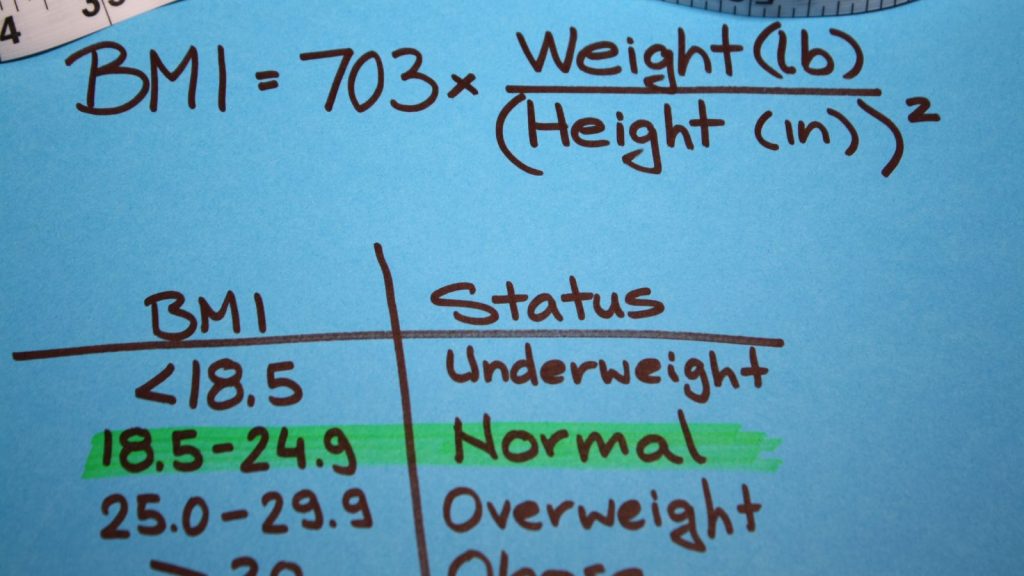When it comes to measuring fitness progress or health status, two terms often come up: BMI (Body Mass Index) and body fat percentage. But they aren’t the same thing — and understanding the difference can change the way you track your goals.
In this article, we’ll break down BMI vs body fat, explain what each metric measures, and help you decide which is more useful for your fitness journey.
What Is BMI?
Body Mass Index (BMI) is a simple calculation based on your height and weight:BMI=Weight (kg)Height (m)2BMI=Height (m)2Weight (kg)
It’s used to classify individuals into weight categories:
| BMI Range | Classification |
|---|---|
| Under 18.5 | Underweight |
| 18.5–24.9 | Normal weight |
| 25–29.9 | Overweight |
| 30+ | Obese |
Pros of BMI:
- Easy to calculate
- Standardized across populations
- Good for population-level risk analysis
Cons of BMI:
- Doesn’t account for muscle mass or body composition
- Can label athletes as overweight or obese
- Doesn’t measure visceral vs. subcutaneous fat
What Is Body Fat Percentage?
Body fat percentage is the amount of fat you carry relative to your total weight. It gives you a direct measurement of body composition, dividing your weight into:
- Fat mass (essential + storage fat)
- Lean mass (muscle, bones, organs, water)
Healthy body fat ranges:
| Gender | Fitness | Average | Obese |
|---|---|---|---|
| Women | 21–24% | 25–31% | 32%+ |
| Men | 14–17% | 18–24% | 25%+ |
Pros of body fat %:
- Reflects actual body composition
- Helps track fat loss vs. muscle gain
- More accurate for fitness transformations
Cons of body fat %:
- Requires tools (calipers, BIA scale, DEXA)
- Can vary based on hydration, method, and consistency
BMI vs Body Fat: Which Is More Accurate?
In terms of fitness and aesthetics, body fat percentage is more useful than BMI because it measures what really matters — your muscle-to-fat ratio.
Let’s break it down by goal:
| Goal | Better Metric | Why |
|---|---|---|
| General health screening | BMI | Quick population metric |
| Building muscle | Body fat % | Tracks lean mass gains |
| Fat loss | Body fat % | Measures fat reduction |
| Aesthetic changes | Body fat % | Shows physical transformation |
| Medical use | BMI | Common in healthcare systems |
If you’re an active person lifting weights or following a structured nutrition plan, body fat percentage gives you the real progress data you need — not just weight and height.
How to Measure Body Fat Percentage
Here are a few methods to measure body fat:
- Skinfold calipers – Pinch test using 3 to 7 sites (accurate with practice)
- Bioelectrical impedance (BIA) – Scales that send mild current through the body
- DEXA scan – Gold standard (but costly and clinic-based)
- Hydrostatic weighing – Old school and very accurate, but not practical for most
Tip: Use the same method consistently for best tracking, even if it’s a BIA scale.
Why BMI Still Matters (Sometimes)
Even though it’s less accurate for fit individuals, BMI still has value:
- Helps identify health risks in non-active populations
- Can act as a starting point for beginners
- Is used in insurance and medical screenings
If you’re brand new to fitness or managing health risks like diabetes or high blood pressure, knowing your BMI can offer some baseline data — but pair it with body fat tracking for real insights.
Read Next
Key Takeaways
- BMI is a quick, general measure based on height and weight, but doesn’t account for muscle or fat distribution.
- Body fat percentage provides deeper insights into fitness, aesthetics, and overall health.
- Track body fat to monitor real progress, especially during fat loss or muscle-building phases.
- Use BMI as a starting point, but rely on body composition data for training and diet decisions.




